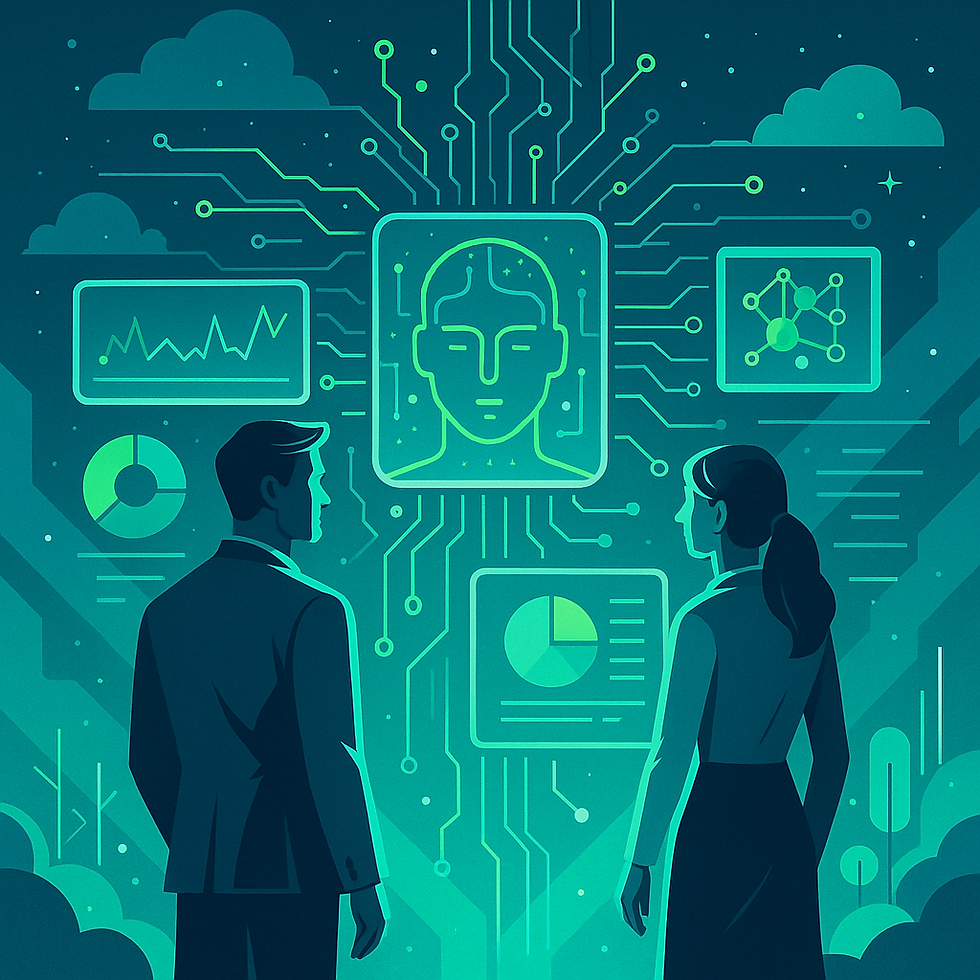The CIWO Advantage: Transforming Leadership to Orchestrate the Human and AI Workforce
- Neil Phasey
- Sep 1
- 4 min read

Most organizations are still flying blind when it comes to AI.
Not because they lack tools, but because they lack leadership equipped to connect the full picture: the technology, the people, the processes, the time, and the transformation.
This is not just about installing software or launching a chatbot. It’s about completely rethinking how work happens, who does it, and how time and value are distributed.
To lead this shift, we need a new kind of leadership. Not a new title for the same thinking. Not a minor update to the org chart. We need a fundamental reframe.
That is why we created the role of Chief Intelligence and Workforce Officer, or CIWO.
This is not a trend. It’s a necessary transformation.
The CIWO did not come out of a job description database. It came out of a recurring tension that is surfacing in boardrooms, offsites, and transformation programs across every industry.
We keep hearing the same things:
"We’re adopting AI, but we don’t know how to align it with our people."
"We’re automating tasks, but we aren’t reinvesting the time we save."
"We’re excited by the tools, but we’re not prepared for the impact."
This tension is not going away. In fact, it's growing. And if left unaddressed, it creates organizational drag, cultural anxiety, and operational misalignment.
The CIWO is the role designed to hold this tension with clarity and leadership. It is the voice in the room that says, "We are not just going to install AI. We are going to redesign how we work , in a way that is intelligent, ethical, and deeply human."
What the CIWO actually does
At Hybridyne, we define the CIWO as a strategic orchestrator of Human and AI synergy. It is not a tech implementer or an HR executive. It is someone who sees the whole system and brings the human layer back into transformation.
Here’s what the CIWO brings to the table:
Role audits and task mapping: This means breaking job roles down into tasks that can be automated, upskilled, reimagined, or elevated. It’s a way to stop thinking in job titles and start designing work around value and strengths.
Time recovery and reallocation: AI creates time. But unless that time is consciously reinvested, it just disappears. The CIWO helps leaders decide how to use recovered time to fuel innovation, creativity, collaboration, and growth.
Human-centric operating design: Instead of just adding AI to existing processes, the CIWO looks at how to embed adaptability, emotional intelligence, learning agility, and wellness into how the organization actually operates.
AI governance and ethical alignment: This role sets frameworks and principles for how AI is integrated responsibly, aligning automation with values and long-term human outcomes.
AI-human synergy roadmaps: Rather than treating AI as a plug-and-play solution, the CIWO builds intentional blueprints for integration that include people, process, and purpose from the beginning.
This is how transformation becomes whole. Not fragmented. Not reactive. But integrated.
The leadership gap is real. The CIWO fills it.
Today, AI transformation is happening in silos.
The CEO delegates AI to the tech team.The CTO owns the tools but not the people.The CHRO is asked to reskill talent without any understanding of what's being automated.The COO is optimizing operations but not rethinking the nature of work itself.
This creates disconnection, fear, inefficiency, and missed opportunity. No one is holding the entire equation.
That’s why the CIWO matters. Because someone has to own the big picture. Someone has to translate strategy into synergy. Someone has to lead the people side of this revolution with intelligence and compassion.
This is the evolution of leadership
We are not in an age of incremental change. We are in a time of reinvention.
In the early internet era, the CIO became essential. In the digital era, we saw the rise of the Chief Digital Officer. But in this Human and AI era, the next evolution is clear.
The CIWO is not a tech enabler. It is a human optimizer. A bridge between intelligence systems and human growth. A guide for organizations seeking not just efficiency, but resilience and meaning.
Success will not be defined by tools alone. It will be defined by how intelligently you transform your operating model, your culture, and your leadership approach.
It’s not optional. It’s overdue.
If you’re asking, "Do we need a CIWO?" you might already be behind.
The better question is, "Who in our organization is actively aligning our AI initiatives with a strategy for human transformation?"
If no one owns that, then there’s your gap.
A final note: This is about more than productivity
This is about building the kind of companies that people want to work in, buy from, and grow with.
It is about replacing fear with clarity. Confusion with coordination. Fragmentation with synergy.
At Hybridyne, we don’t just advise organizations on AI. We help them lead this next chapter of human-first, intelligence-enabled transformation.
To learn more about the CIWO, see our other blogs on this subject:




Comments